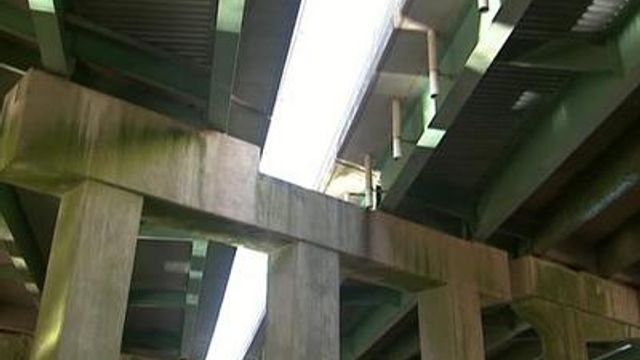DOT to add safety fence at site of I-440 bridge death
The state Department of Transportation says it will add a second security fence at a Raleigh bridge where a man fell to his death Friday.
Posted — UpdatedRaleigh police said Carroll Lee Eames Jr., 33, of Willow Spring, jumped over a barrier between the eastbound and westbound lanes of Interstate 440 near Glenwood Avenue and Six Forks Road to avoid oncoming traffic.
Eames, who had been trying to help others following two wrecks, apparently did not realize there was a gap between the two bridges that opens below to Crabtree Creek, police said. He fell 70 feet to the creek and died.
Todd Fletcher, 26, died in a similar fall at the same bridge in October 2005.
DOT Secretary Gene Conti said the department is still investigating the fall and conducting a study of bridge crossings across the state but will proceed with the security fence out of an abundance of caution.
It is expected to cost up to $50,000 and to be installed by Feb. 1.
“We regret that this terrible accident occurred, and we’ll do whatever we can to prevent another such tragedy, here or anywhere else across the state,” Conti said Thursday.
State highway administrator Terry Gibson has ordered a study of bridges across the state to determine whether safety hazards exist. The staff also is looking at policies in other states.
Following Fletcher's death, the DOT placed a fence on the inside part of I-440 Inner Beltline but not on the inside part of the Outer Beltline. The DOT said it thought by adding the fence to one side, it would be an indicator to not jump over the side of the bridge.
"One bridge is higher than the other, and what we saw at the time (in 2005) is for an individual to walk up to the rail of the bridge and look over, it was difficult to see that there was a gap between the bridges," Gibson said.
"From the lower side, you could see the fence, when we put it in. You could also see the wall, and it was apparent that there was some obstruction there."
Copyright 2024 by Capitol Broadcasting Company. All rights reserved. This material may not be published, broadcast, rewritten or redistributed.






